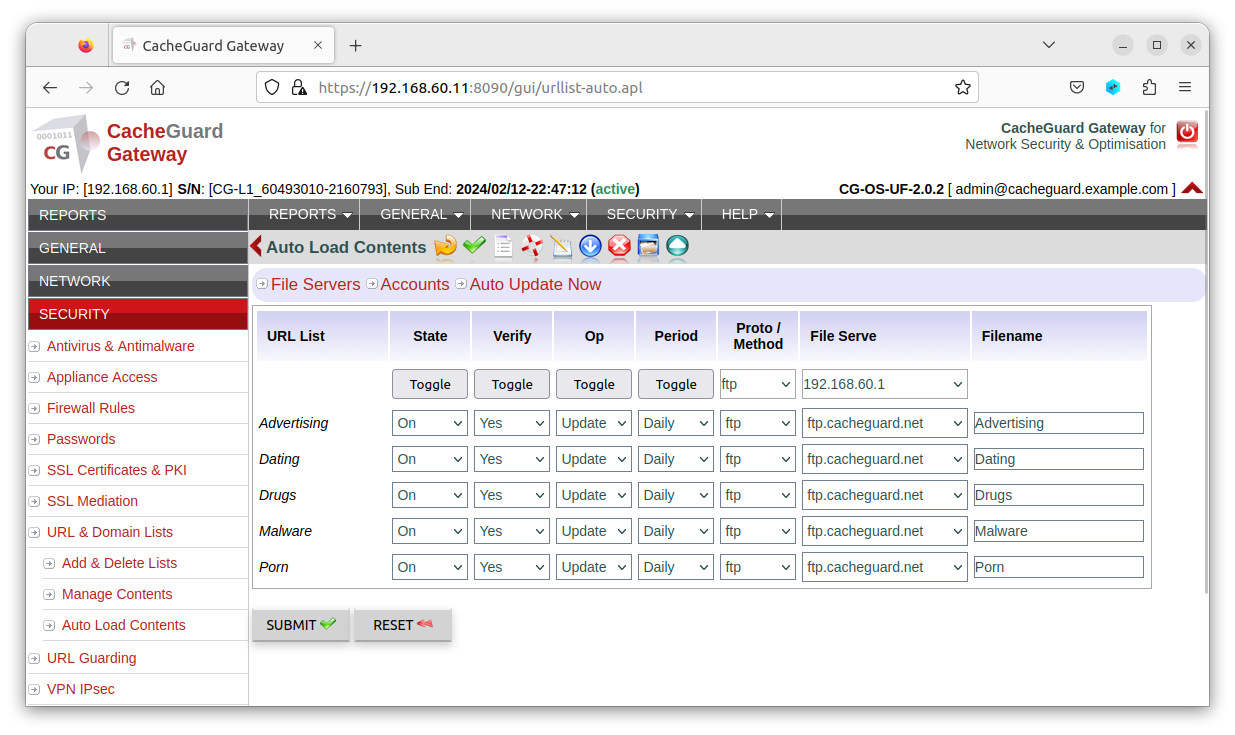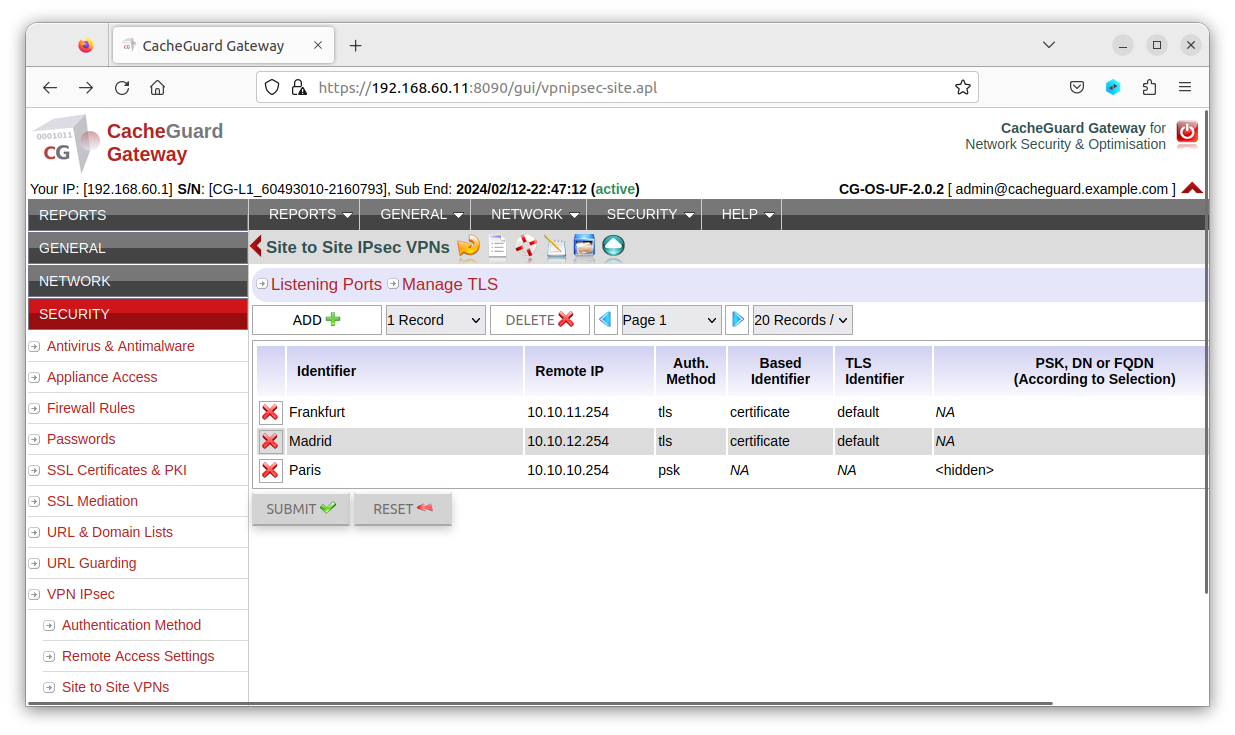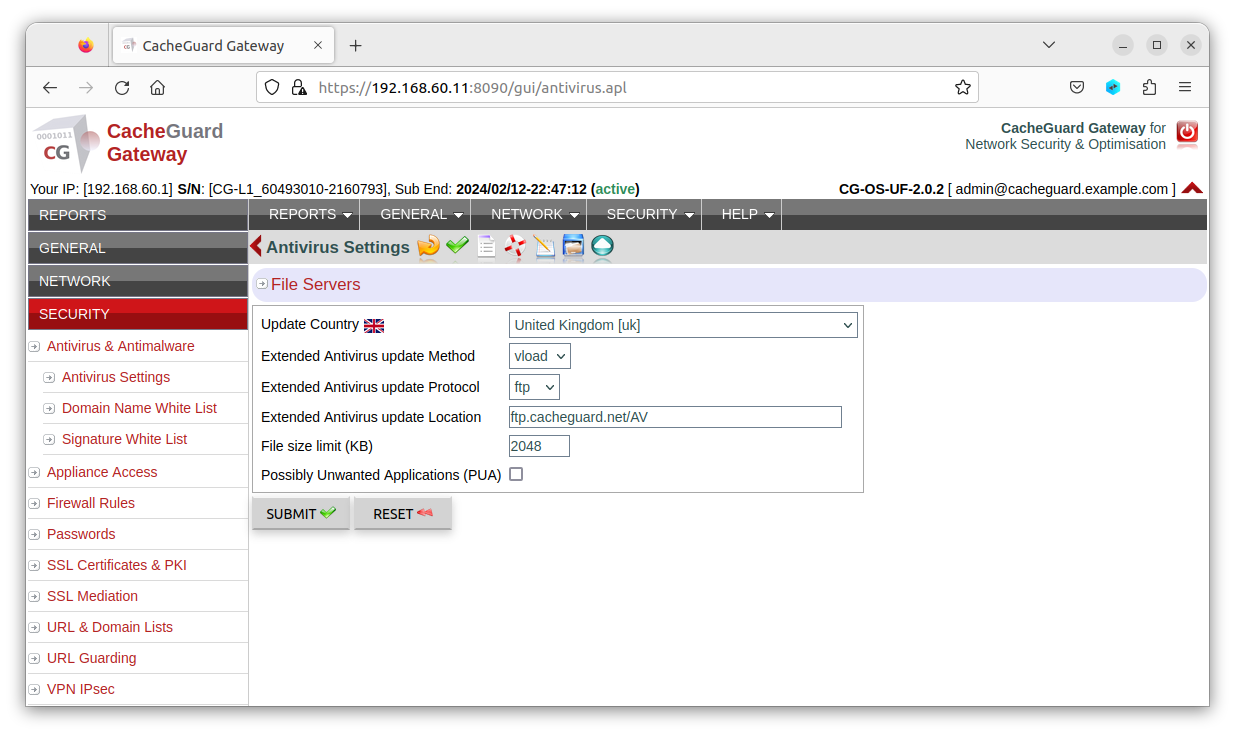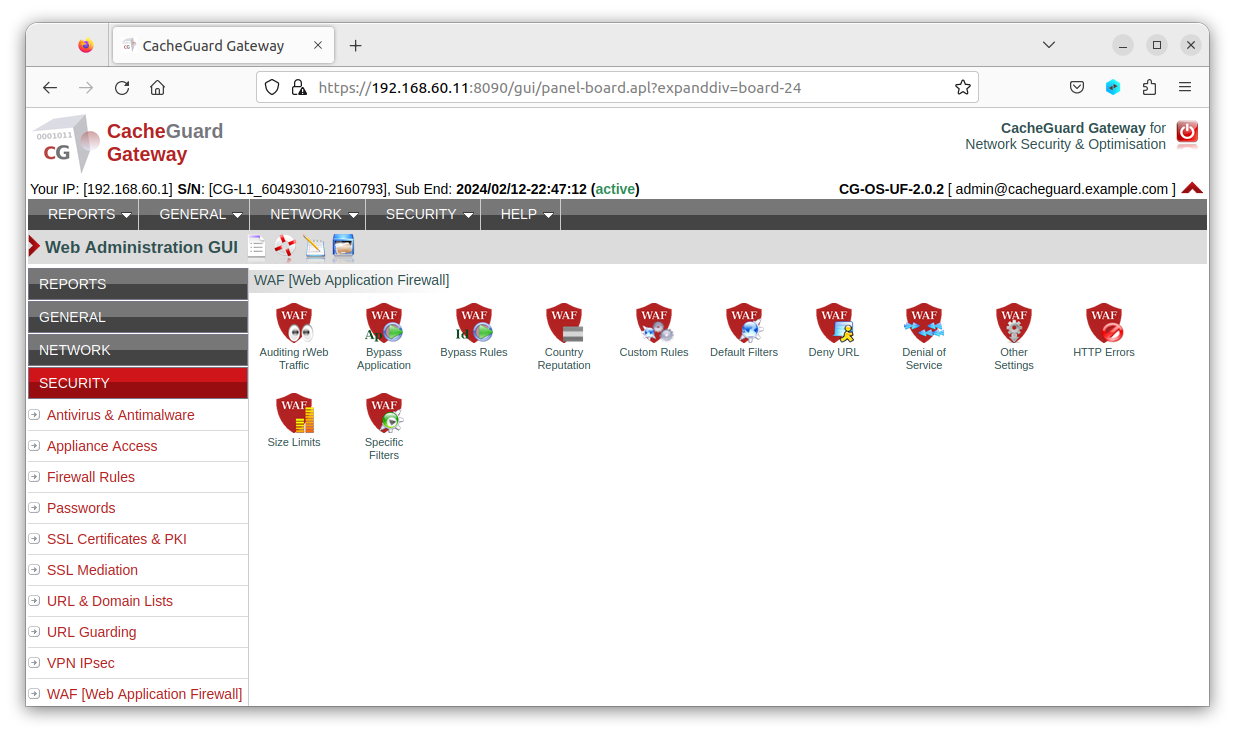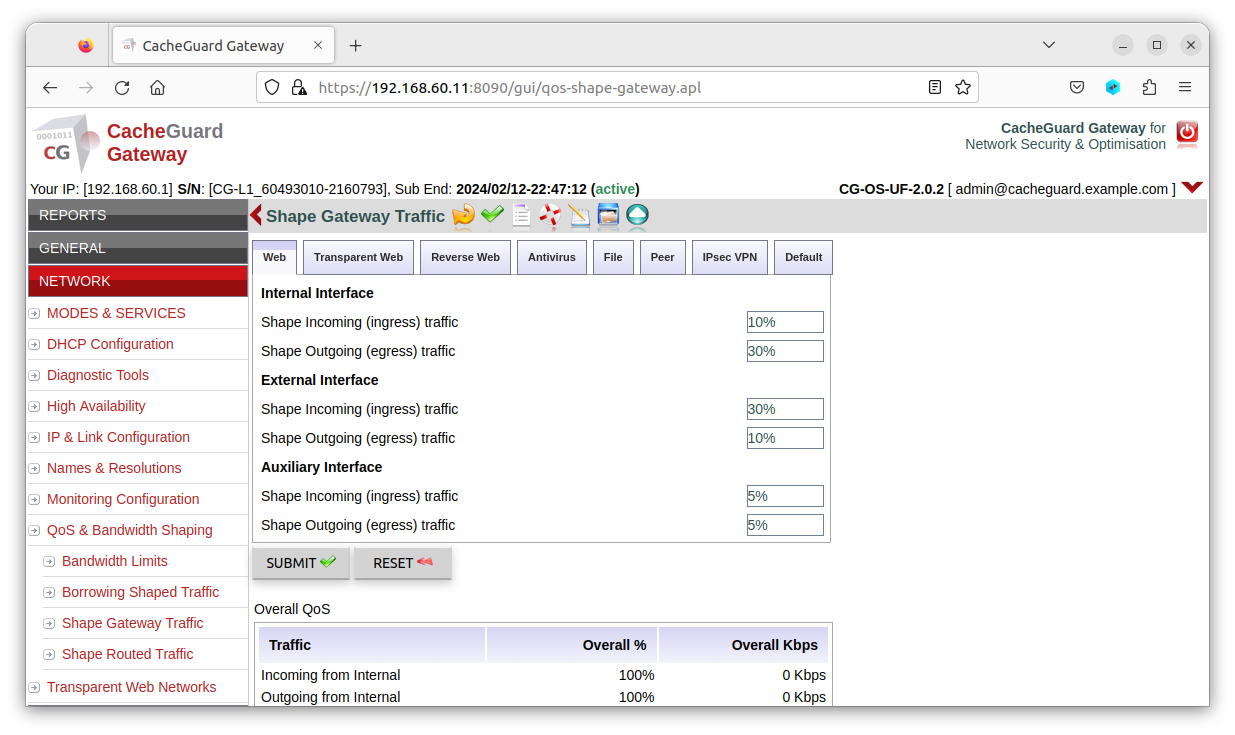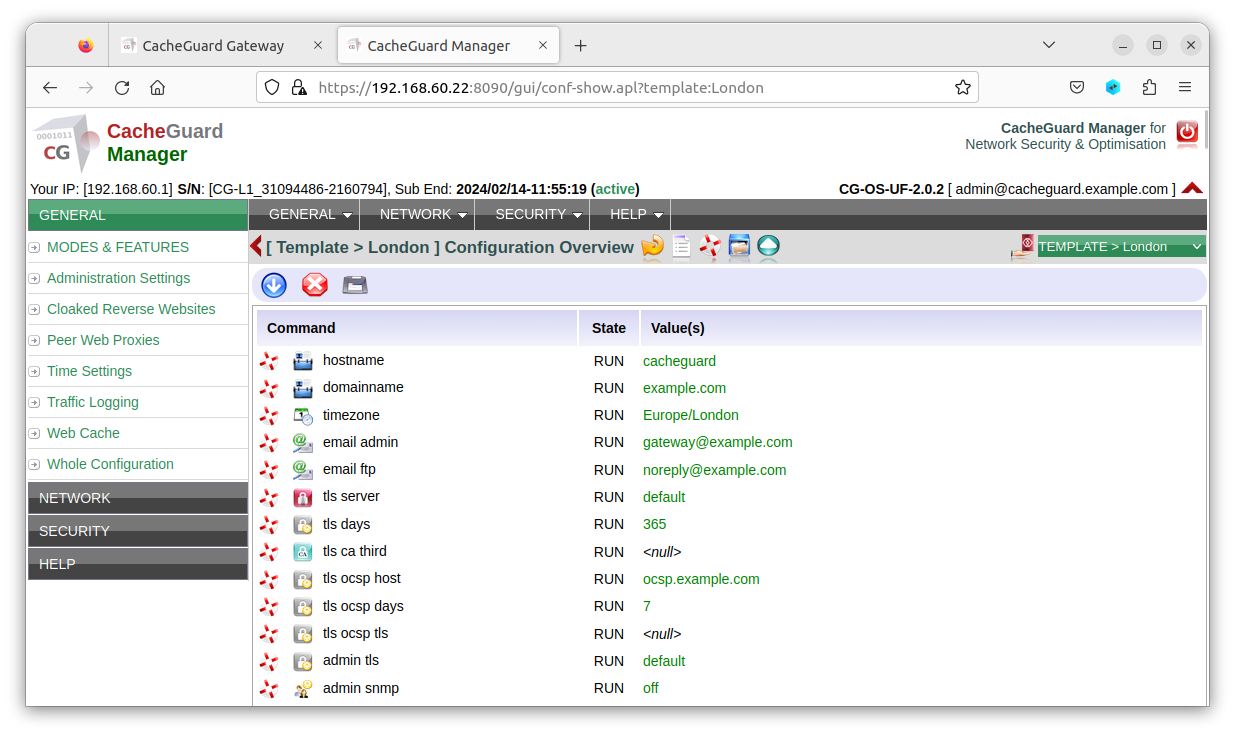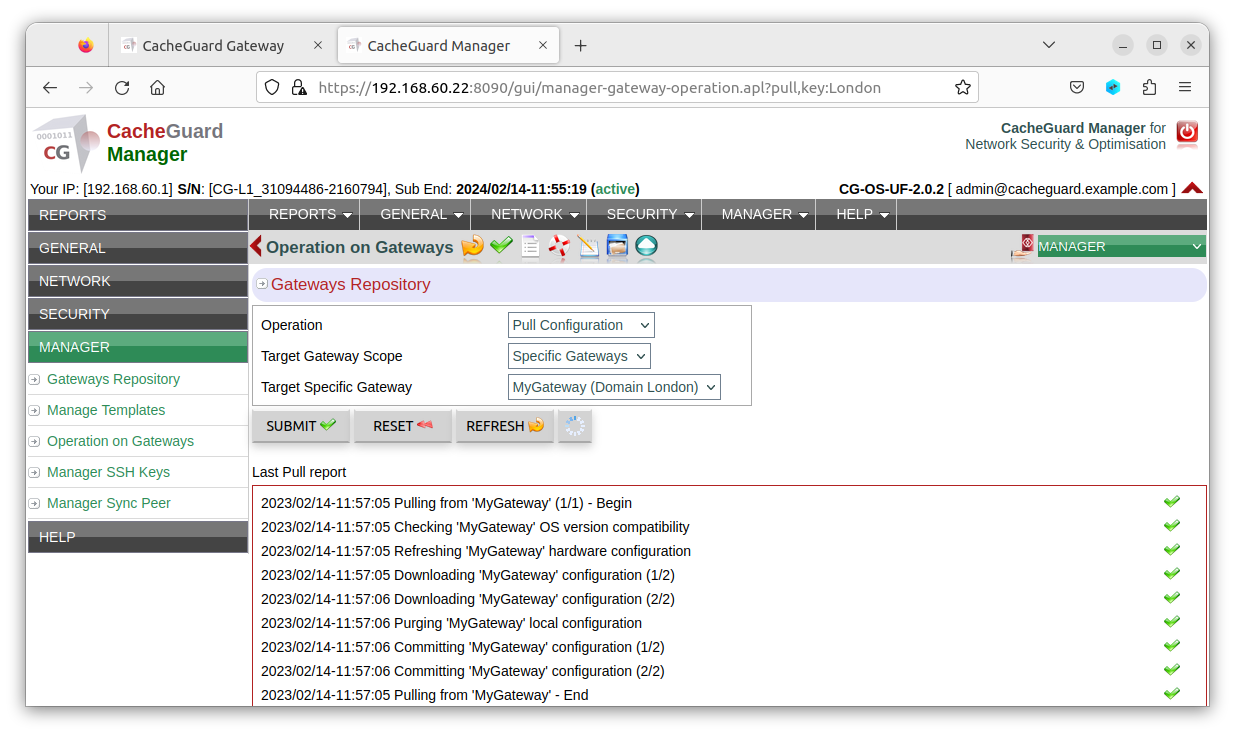CacheGuard-OS

All CacheGuard Appliances run on CacheGuard-OS, a Linux-based operating system built from the ground up and specifically designed to secure and optimize network traffic. Once installed on either a hardware or virtual machine, CacheGuard-OS transforms that machine into a powerful and user-friendly network appliance.
Great care has been taken to select the best open-source technologies for integration into CacheGuard-OS. The OS includes powerful software such as OpenSSL, NetFilter, IProute2, StrongSwan, ClamAV, Apache, ModSecurity, and Squid, among others. A smart and highly secure design, combined with specific open-source developments, ensures that these technologies work together seamlessly and efficiently. That’s the brilliance of CacheGuard-OS.
🚀 Get CacheGuard Now
Free for up 10 Users/Devices
An Innovative Solution
CacheGuard-OS ensures that heterogeneous open-source software runs consistently and seamlessly together. This is achieved through a smart design and the development of over 200,000 lines of open-source code. With CacheGuard-OS, the complexity of the built-in software is hidden behind the scenes. All you need to do is turn the key and enjoy the benefits.
CacheGuard-OS Configuration
After installing CacheGuard-OS on a machine and setting up the basic IP configuration, the resulting network appliance can be managed and configured through its CLI (Command Line Interface) and/or its Web GUI using a web browser. The Web GUI is designed to be user-friendly and easy to navigate, even for non-IT professionals. Special attention has been given to ensure compatibility with popular web browsers such as Firefox, Safari, Opera, Chrome, and Edge. You can explore CacheGuard-OS demos on our YouTube channel at CacheGuard YouTube Channel.
Machine Requirements
CacheGuard-OS is available in both x86 (32-bit) and x64 (64-bit) versions, and is compatible with nearly all x86/x64 machines from leading manufacturers such as HPE, Dell, and IBM, as well as hypervisors like VMware, Hyper-V, and Proxmox. The system’s resource requirements primarily depend on the number of users you need to support and the services you intend to activate.
During installation, CacheGuard-OS is tuned to optimize performance based on the available machine resources and user load. For example, for 100 forwarding users (20 simultaneous users), a typical machine configuration might include 4 CPU cores, 8 GB of RAM, 250 GB of disk space, and 2 network interfaces.
For environments with more users, we recommend selecting a machine with additional RAM, CPU cores, and disk capacity. As a general guideline, add 1 GB of RAM and 1 CPU core for every additional 10 simultaneous users. Additionally, you may need to increase disk capacity by 75 GB for every extra 50 non-simultaneous users.
Please note that for hardware machines, CacheGuard-OS performs more efficiently with multiple low-capacity disks configured in RAID, as opposed to using a single high-capacity disk. The OS natively supports software RAID 0, 1, 5, 6, and 10, using only 3% of CPU resources.
With CacheGuard-OS, you can activate most integrated security and optimization functions simultaneously on the same machine. Some functions, such as HTTP real-time compression and antivirus, are more CPU-intensive. For example, activating antivirus requires approximately 2 GB of RAM. The recommended machine configuration above allows you to enable all available features at once, though you may need fewer resources if you only activate a subset of features.
Please note that the 64-bit installation of CacheGuard-OS requires at least 512 MB of RAM and 20 GB of disk space.
CacheGuard-OS Licensing
CacheGuard-OS is the result of combining various Open Source software (as defined by the OSI) and proprietary software developed by CacheGuard Technologies. All software created by CacheGuard Technologies is licensed under the GNU General Public License v3 (GPLv3). However, the aggregation of both CacheGuard Technologies software and third-party software that makes up CacheGuard-OS is licensed under the CacheGuard License Agreement.
CacheGuard-OS is offered as a subscription-based service. For more details on our pricing, please visit the Purchase CacheGuard page.
Get CacheGuard Now
Free for 10 Users

